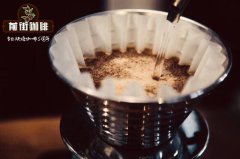The location conditions of coffee cultivation can be upgraded by the poor experience of widely growing coffee.

Professional coffee knowledge exchange more coffee bean information please follow the coffee workshop (Wechat official account cafe_style)
Introduction to Qianjie-Coffee growing Belt
The global "coffee belt" is mainly located in areas with sufficient precipitation between the Tropic of Cancer and the Tropic of Cancer.
Most of the coffee producing areas in the world are located in the tropics between the Tropic of Cancer and the Tropic of Cancer, which we call the "coffee belt" or Coffee Belt or Coffee Zone in English. As a tropical cash crop, coffee tree grows in the coffee belt with excellent climatic conditions, where the sun shines all the year round, has abundant calories and abundant Rain Water, and the annual average temperature is above 20 ℃.
However, not all kinds of coffee trees can endure high temperature, humidity, and strong light. For example, some Arabica coffee trees are not resistant to high temperature and humidity, and they are often planted in areas at higher elevations. If the light is too strong, shade treatment is also needed, hence the name "rainforest coffee" and "shade coffee".
The coffee belt (coffee production zone) ranges from 25 degrees north latitude to 30 degrees south latitude, including many countries in Central, West Africa, the Middle East and South Asia, the Pacific, Latin America and the Caribbean. The reason why coffee cultivation is concentrated in this area is due to the limitation of temperature. Coffee trees are very vulnerable to frost, north or south latitude is not suitable, only in the tropics, the heat and humidity in this area is the best.
The global "coffee belt" is divided into three major producing areas: where the word "coffee" is located: Costa Rica, Nicaragua, Colombia, Brazil and other "coffee" in the Americas; Ethiopia, Kenya, Uganda, C ô te d'Ivoire and other "belt" in Africa: Indonesia, India, Yunnan, China, etc.
Here is a brief description of the African producing areas. In fact, the so-called African producing areas are planted in only a few countries and regions, which is caused by the particularity of the geographical environment of Africa. There is the world's largest Sahara desert in the north and the oldest plateau continent in the south, so it is difficult to produce a climatic environment suitable for coffee cultivation. Those countries and regions near the equator are more suitable for growing coffee tree, and the coffee beans produced are of very high quality.
Knowledge: although coffee beans are called beans, they are actually the seeds of the fruits of Rubiaceae (coffee trees).
In short: Qianjie is a coffee research hall, happy to share the knowledge about coffee with you, we share unreservedly just to make more friends fall in love with coffee, and there will be three low-discount coffee activities every month. The reason is that Qianjie wants to make more friends drink the best coffee at the lowest price, which has been Qianjie's tenet for 6 years!
END
Important Notice :
前街咖啡 FrontStreet Coffee has moved to new addredd:
FrontStreet Coffee Address: 315,Donghua East Road,GuangZhou
Tel:020 38364473
- Prev

The natural conditions of coffee cultivation Arabica requires high planting conditions in order to produce high quality.
Professional coffee knowledge exchange more coffee bean information please pay attention to the coffee workshop (Wechat official account cafe_style) front street-Arabica coffee planting conditions introduction the higher the elevation of coffee trees, coffee quality will be relatively good, such as Arabica beans are in the altitude of 1000-2000 meters above sea level, Robbosa beans are generally located in the plains below 800m
- Next

Nicaragua Aguwasaka Sun treatment Malakadura experience the taste of fruit juice explosion in the mouth
For more information about coffee beans, please follow the front street of the coffee workshop (official Wechat account cafe_style). There is a rainforest area called the lungs of nature on the Aghuasaka farm, which provides a suitable living environment for more animals and plants. Due to the way that the forest is allowed to grow freely, the trees here
Related
- Beginners will see the "Coffee pull flower" guide!
- What is the difference between ice blog purified milk and ordinary milk coffee?
- Why is the Philippines the largest producer of crops in Liberia?
- For coffee extraction, should the fine powder be retained?
- How does extracted espresso fill pressed powder? How much strength does it take to press the powder?
- How to make jasmine cold extract coffee? Is the jasmine + latte good?
- Will this little toy really make the coffee taste better? How does Lily Drip affect coffee extraction?
- Will the action of slapping the filter cup also affect coffee extraction?
- What's the difference between powder-to-water ratio and powder-to-liquid ratio?
- What is the Ethiopian local species? What does it have to do with Heirloom native species?

